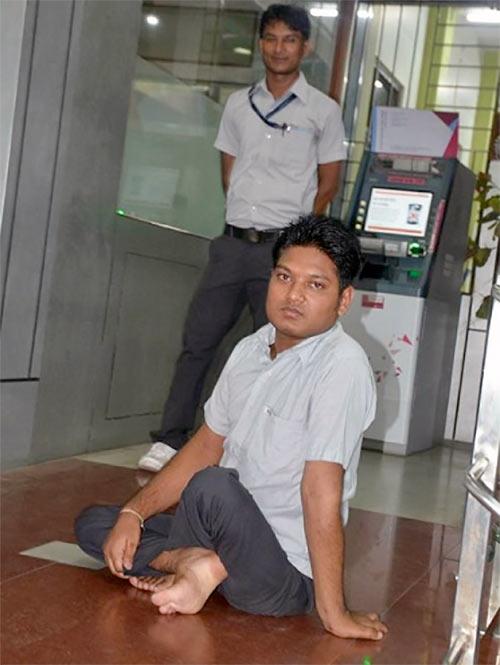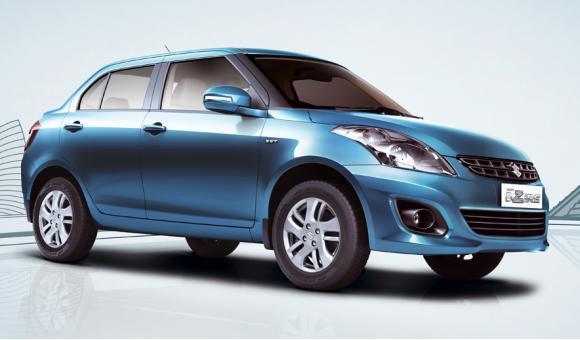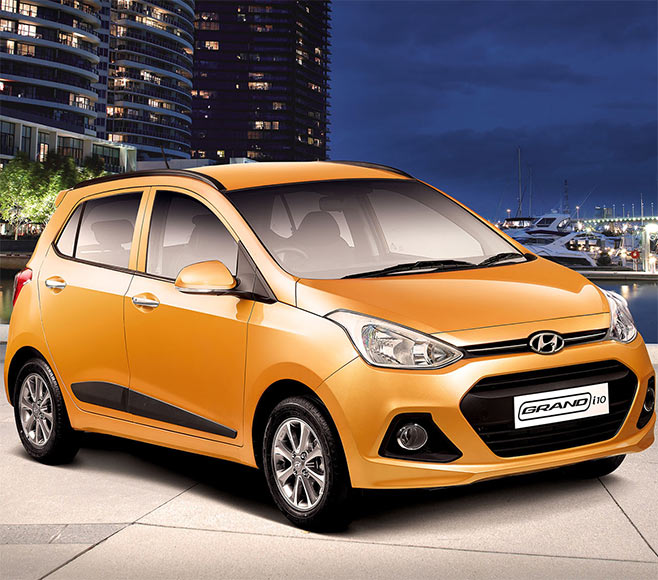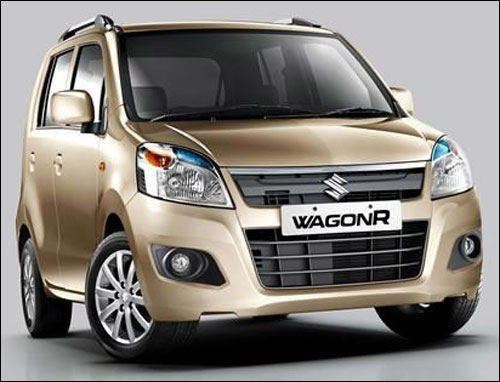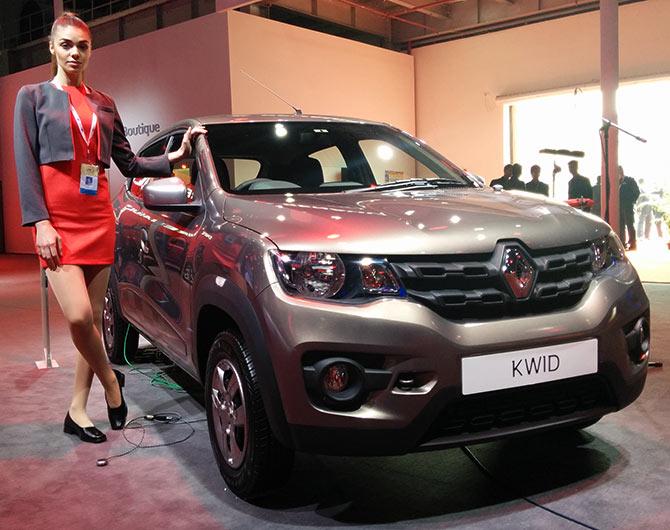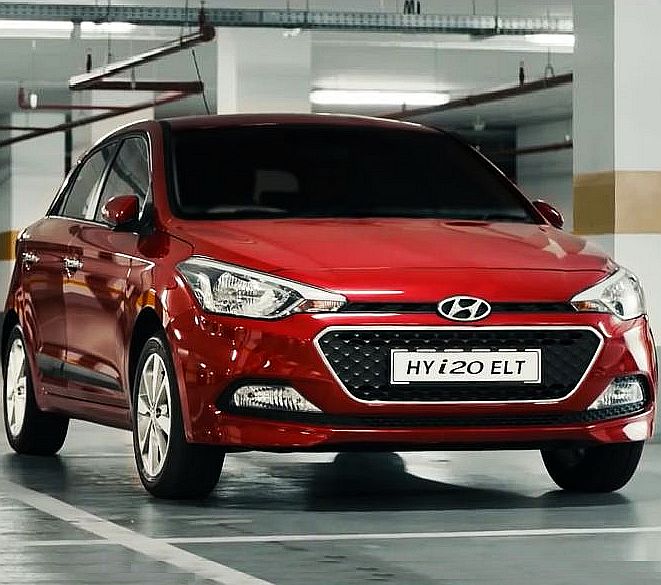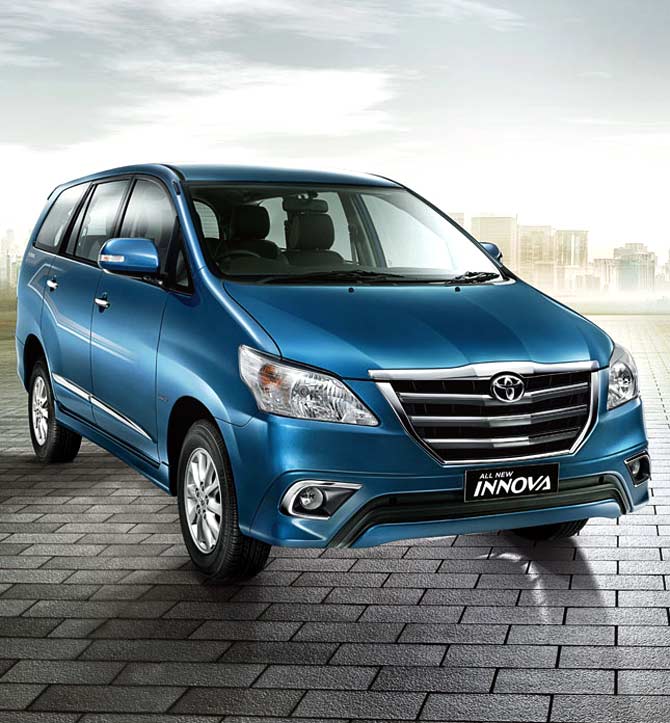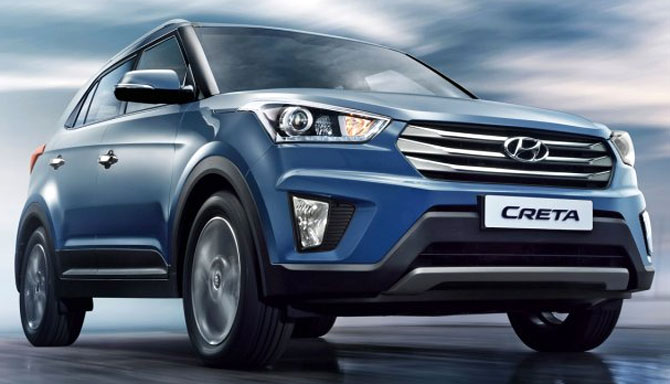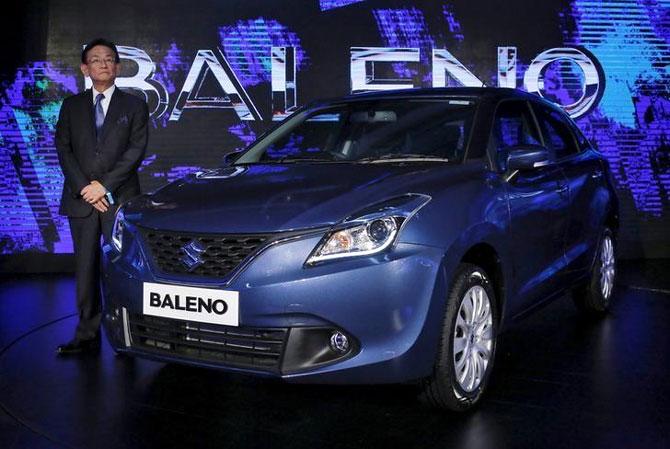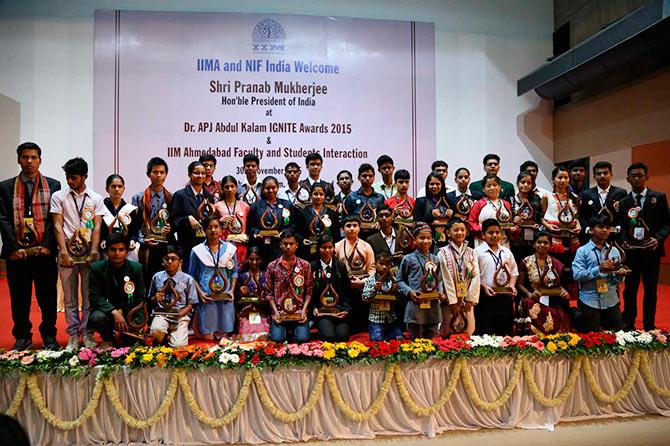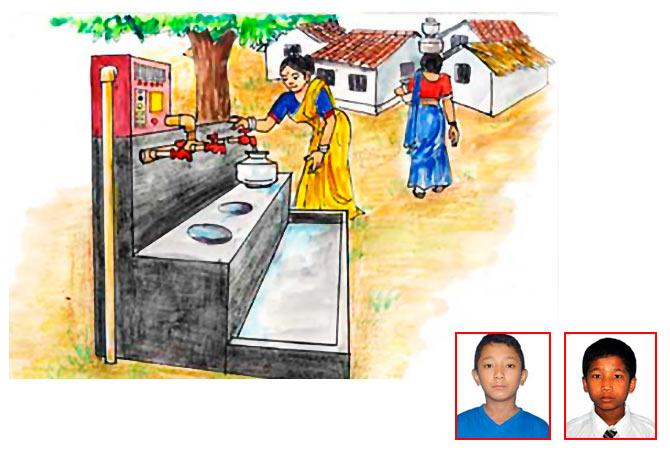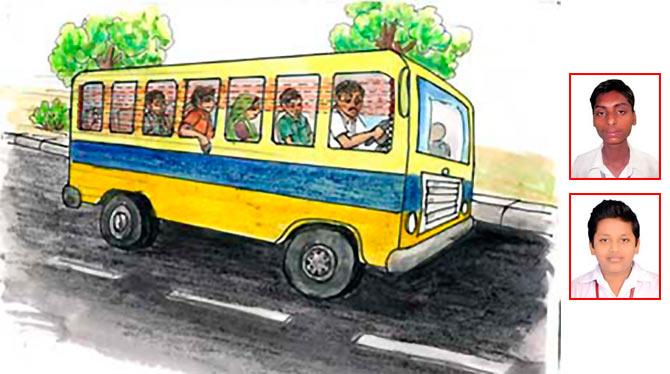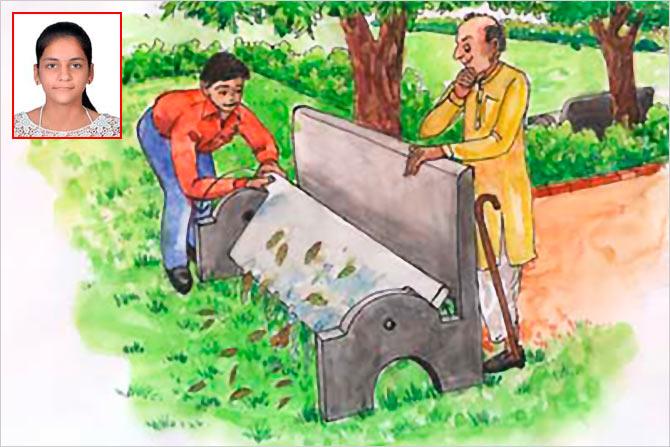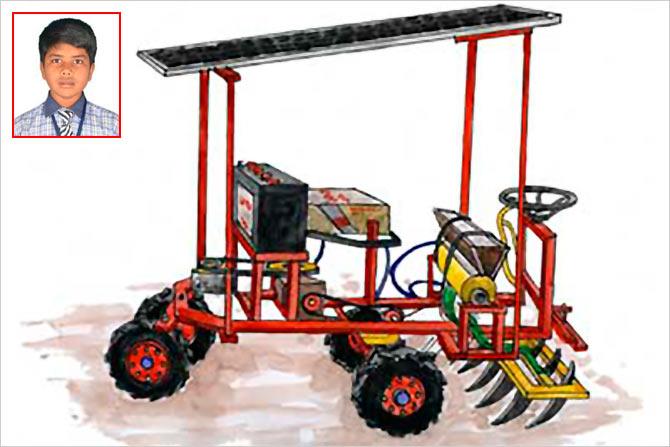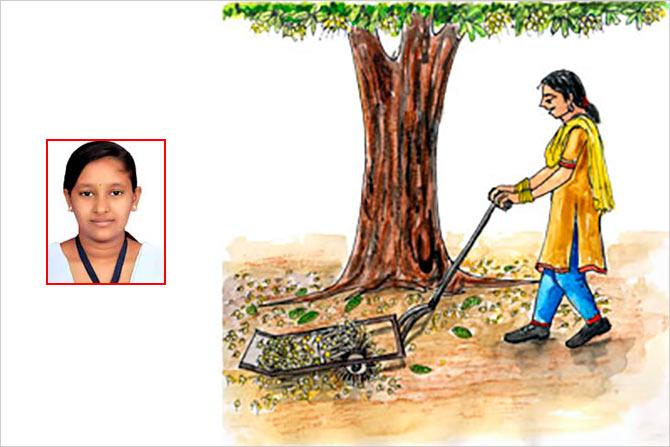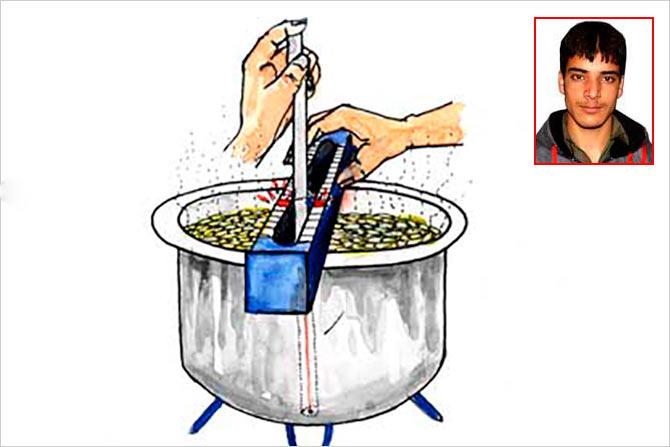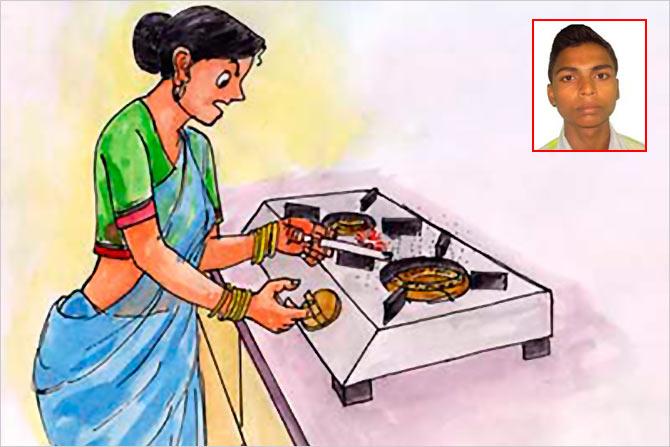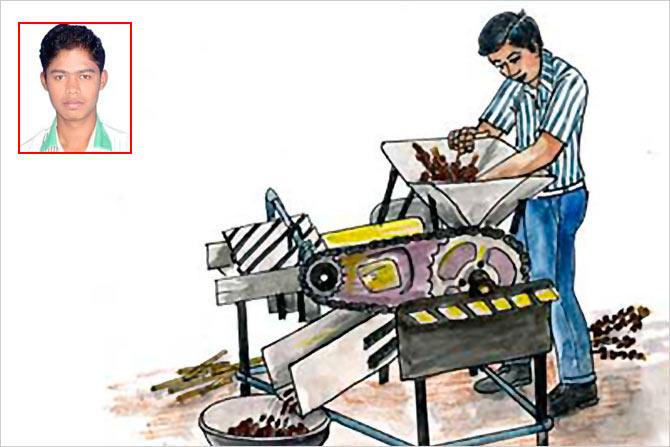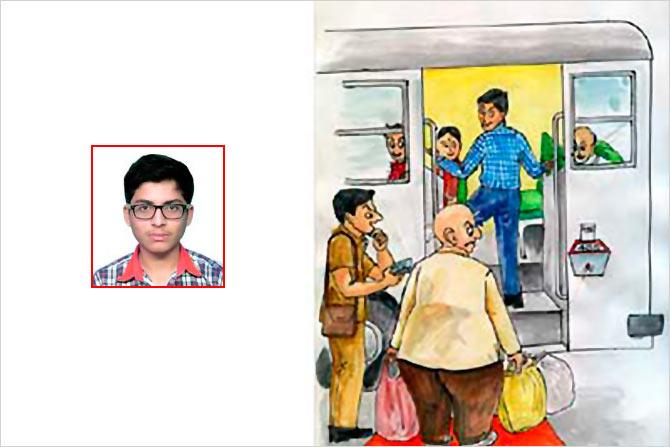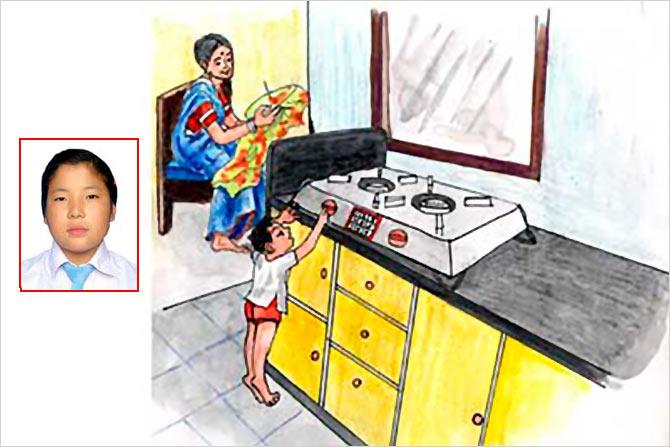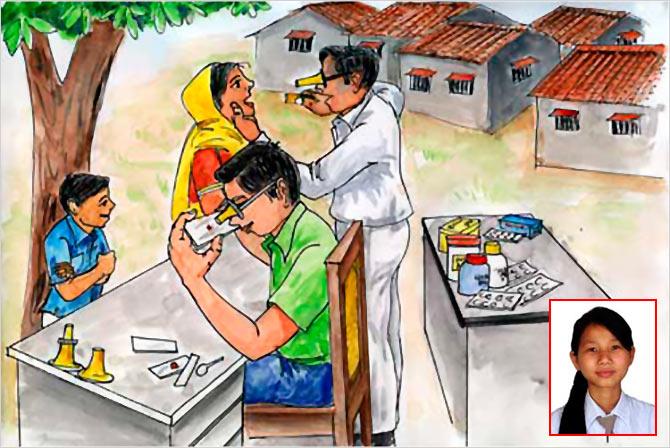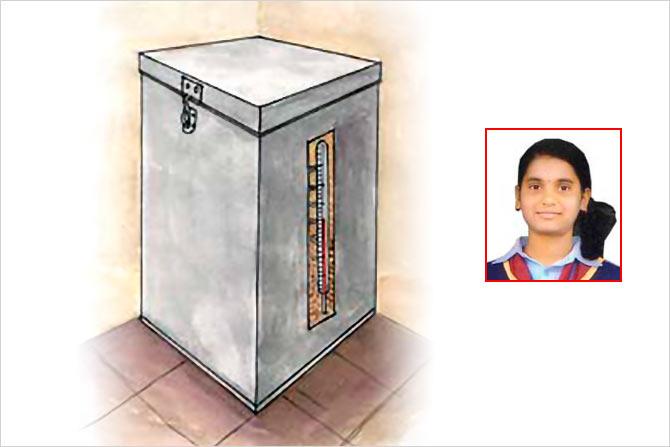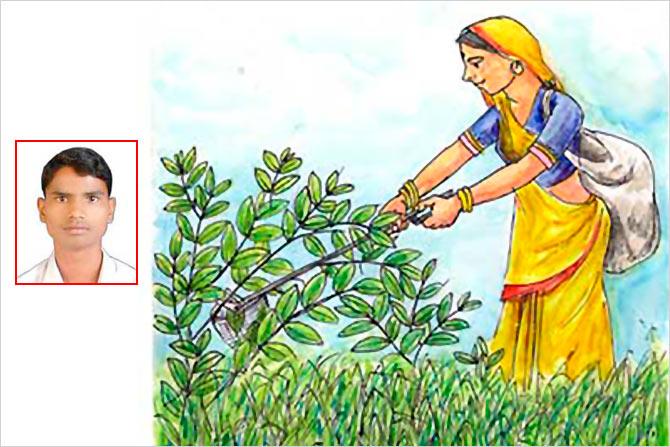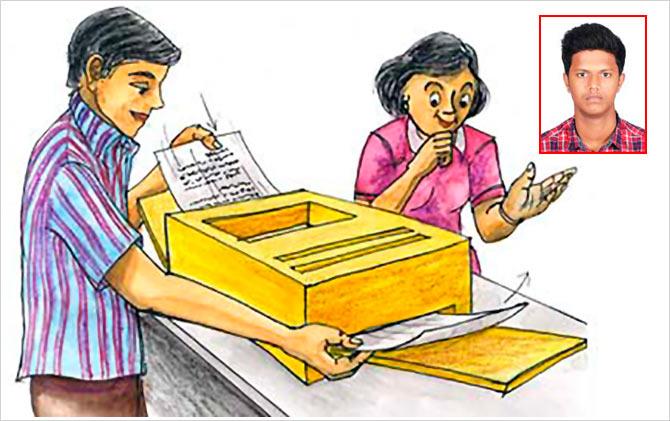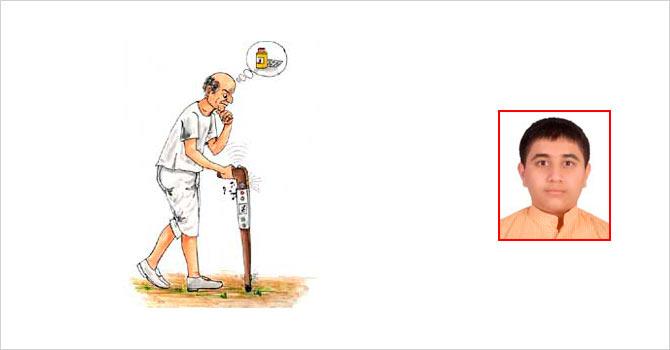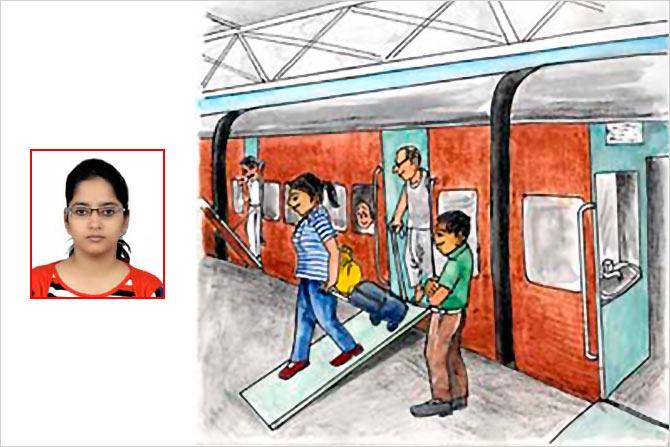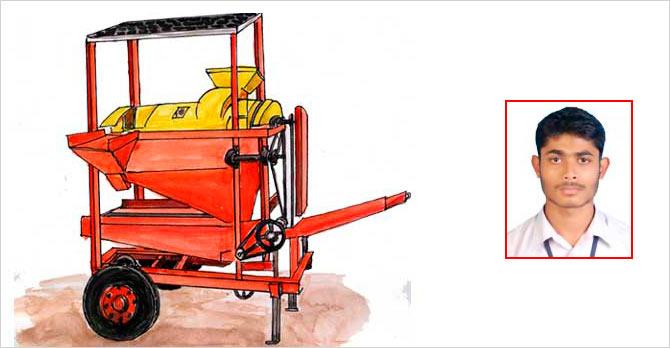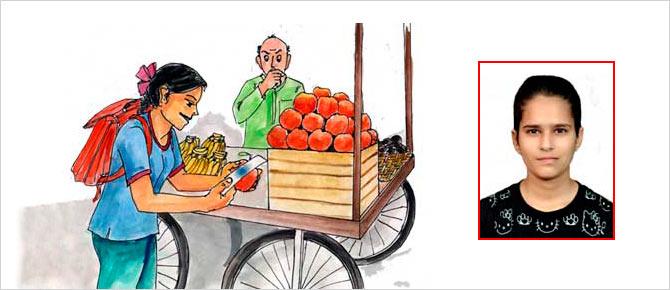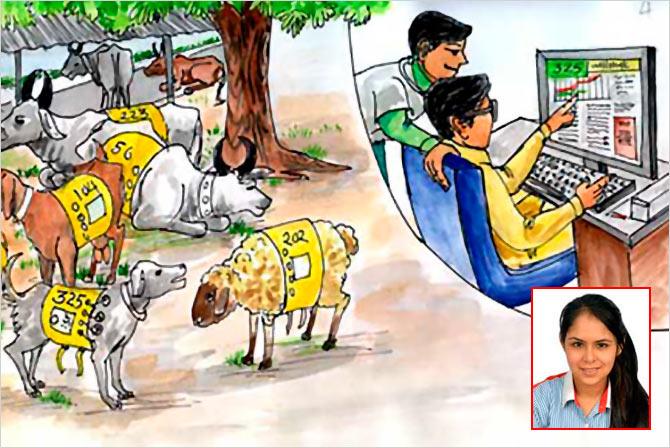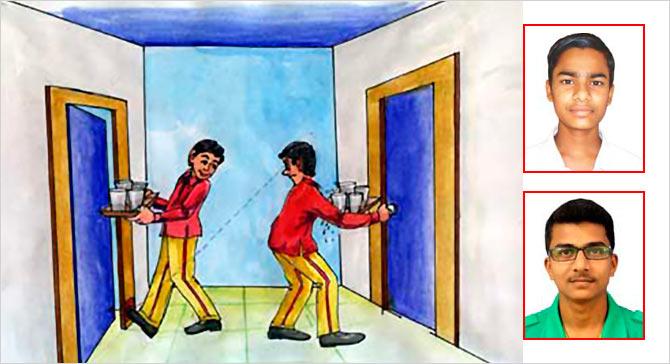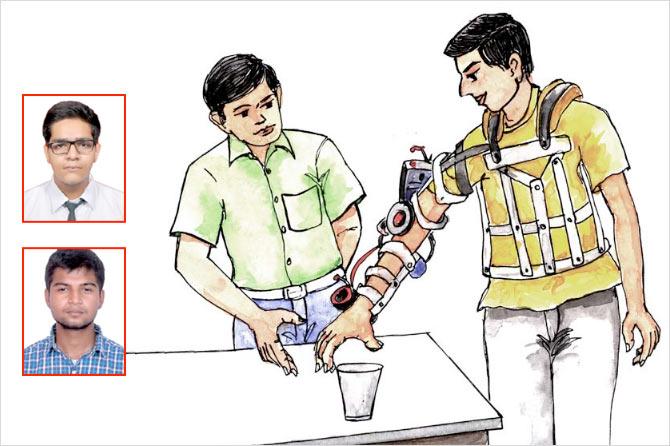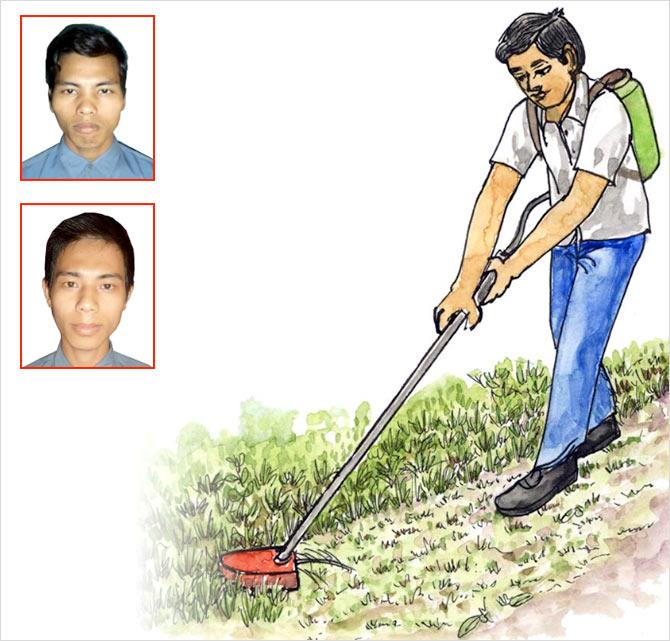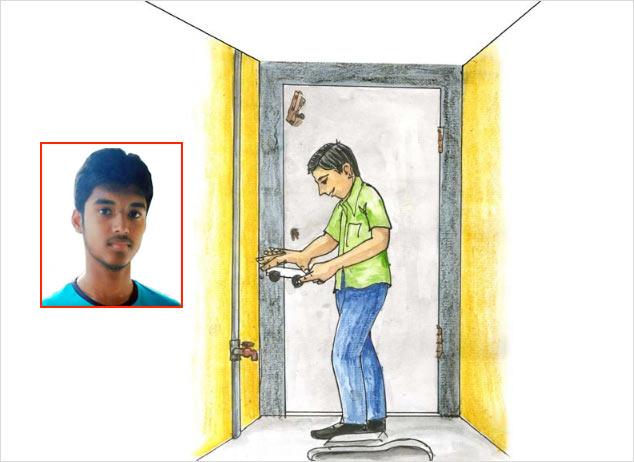31 amazing innovations from young Indians
The National Innovation Foundation India (NIF), Ahmedabad shared the ideas that shined at the IGNITE 2015.
Every year, the
National Innovation Foundation India (NIF), Ahmedabad invites students
from across schools in the country to share their innovative ideas on
how to build a better world.
The competition is organised by NIF in association with Central Board
of Secondary Education (CBSE), Society for Research and Initiatives in
Sustainable Technologies and Institutions (SRISTI), various State
Education Boards and other partners.
Students in (up to class 12) or out of the school (up to the
age of 17 years) can participate in the IGNITE competition by sending
their original technological ideas to solve any problem in day to day
life or real life technological innovations demonstrating innovative
ways of solving problems/ reducing drudgery/generating efficiency/
conserving resources etc.
More than 28,000 entries were received this year of which 31 best ideas made the cut.
This year the 'Dr APJ Abdul Kalam IGNITE Awards 2015' were
given by the President of India, Pranab Mukherjee at the Indian
Institute of Management, Ahmedabad in the presence of state chief
minister Anandiben Patel.
President Pranab Mukherjee interacts with a young innovator at Dr APJ Abdul Kalam IGNITE Awards 2015
Among the other dignitaries who graced the occasion include
governor of Gujarat, Shri OP Kohli; prof Ashutosh Sharma, secretary,
Department of Science & Technology, Government of India; Prof Ashish
Nanda, director, IIM-A; Dr RA Mashelkar, chairperson, NIF and Prof Anil
Gupta, executive vice chairperson, NIF.
Winners of Dr APJ Abdul Kalam IGNITE Awards 2015
Presenting the ideas that impressed the jury. Take a look!
1. Innovation: Water filter/purifier at source
Names: Soring Lepcha, Class 4, and Subash Prodhan, Class 5, Lingzya Junior High School
Place: North Sikkim, Sikkim
Inspiration behind the idea: Most people today prefer to use a water filter/purifier at their home.
Both the children have given idea to have filter/purifier at the
source of water so that everyone has access to clean water without
having to make an investment in purchasing a filter/purifier.
Soring's idea is to have a centralised purification system at the
point of distribution like water tank while Subash's idea is to have
such purifiers attached to public taps.
2. Hand rest for fractured hand
Name: Adi Kumar, Class 5, Deens Academy
Location: Bengaluru, Karnataka
Inspiration behind the idea: Generally shoulder arm slings are used to provide support to a fractured hand.
Using this for a long time sometimes give discomfort to the neck/ shoulder region.
Adi's idea is to have a waist worn appendage, which can provide
support to a fractured hand instead of the sling. The fractured arm
would be rested comfortably on the appendage and kept in position by
straps.
3. Umbrella for more than five persons
Name: Tarna Joy Tripura, class 6, Kabi Guro Rabindra Nath Smiti
Location: Dhalai, Tripura
Inspiration behind the idea: Many times, it becomes difficult for
more than one person to share an umbrella during rains. Young Tunnab has
given an idea of an umbrella, which could be held by two children from
two sides under which other children can stand and thus go to school
together without getting wet.
4. Alerting system for bus drivers
Names: Pradyumna Kumar Pal, class 7, Saraswati Sishu Vidya Mandir,
Unit-3, Khordha, Orissa; and Rahul Kumar, class 9, Rajkiya Balak Uchh
Vidyalaya, Patna, Bihar
Sometimes accidents occur when a passenger puts his body part outside
the bus window. Pradyumna and Rahul have independently conceived an
idea of an alerting system for the bus driver, which enables them to
know which passenger has put his hand or head outside the bus window.
5. Reversible benches at public places
Name: Simran Chadha, Class 8, BCM Arya Public School
Location: Ludhiana, Punjab
Simran's idea is to have reversible benches at public places so that
if they become wet (due to rains) or dirty, they can be rotated using a
handle so that the other side, which comes up can be used.
6. Solar seeder
Name: Subash Chandra Bose, Class 8, St Sebasthiyar Matriculation School
Location: Pudukkottai, Tamil Nadu
Subash has developed a solar powered seed drill, which can undertake
plantation for different size of seeds at variable depth and space
between two seeds.
7. Looms for physically challenged
Name: R Elakkiya, Class 6 and R Pavithra, Class 9, SRC Memorial Matriculation
Location: Erode, Tamil Nadu
The two sisters have come up with loom for lower limbed physically
challenged. In their loom they have replaced the pedal operated system
with a motor and a gearbox attached to a pulley mechanism.
8. A device to collect Mahua flowers from ground
Name: Lipsa Pradhan, Class 9, Government High School, Kamagaon
Location: Bargarh, Orissa
Mahua flowers have many medicinal properties and are also
used to make pickles, jams, and now ice creams as well. Lipsa has
suggested a manual device like a lawn mover, which can collect Mahua flowers, which are otherwise picked up by hands, which is a time consuming and tiring process.
9. Pebble indicating system for cooking vessel
Name: Mohd. Tawseef Thoker, Class 9, Government Higher Secondary School, Nihama
Location: Kulgam, Jammu and Kashmir
It happens many a times that while cleaning food grains for cooking,
some impurities remain, which get cooked with the food. Tawseef suggests
having a vessel with sensors, which can indicate the presence of
pebbles or other similar impurities in rice or other food grains being
cooked.
10. Gas lighter with gas leak alarm
Name: Nilesh Ras, Class 9, DAV Inter High School
Location: Patna, Bihar
A lot of mishaps occur when cooking gas regulator has been left on
accidentally or due to a gas leak. Nilesh's idea is to have a gas
lighter, which can sense and indicate gas leakage before it is lighted
thereby preventing accidents.
11. Innovative dustbin
Name: Prem Ranjan Singh, Shivani Singh, Ankush Pal, Class 9, Divya Jyoti English High School
Location: Daman, Daman & Diu
Concerned with the sight of overflowing garbage bins, the three
friends have come with an idea of a dustbin with separate slots for
bio-degradable and non bio-degradable waste with a message sending
facility to the municipality once dustbin is filled up to a preset
level.
12. Lac extraction machine
Name: Saurabh Dey, Class 10, Govt. High School, Barajamda
Location: West Singhbhum, Jharkhand
For lac extraction generally the lac coated branches of host trees are cut, crushed and sieved to remove impurities.
Saurabh has made a machine, which can remove lac from the branches
without breaking them. As a result, the amount of impurities is lesser
in lac and it takes lesser effort to clean it.
13. Pay as you weigh!
Name: Rishab Mallick, Class 10, Kendriya Vidyalaya, Fort William
Location: Howrah, West Bengal
An idea of an automatic ticketing system where fare is calculated as per the weight of the passenger and his luggage.
14. Passcode based locking system in gas stove
Name: Nim Lepcha, Class 10, Gor Secondary School
Location: North Sikkim, Sikkim
An idea to have a manual or digital pass code system for gas stoves to avoid accidents involving children.
15. Spectacle microscope
Name: Hadasha Ruangmi, Class 10, Lorna's School
Dimapur, Nagaland
An idea to have wearable microscope like a spectacle so that it becomes easy to store, carry and use.
16. Seed container that indicates growth of germs
Name: Deepti Manjari Dakua, Class 10, Bahadjhole Girls High School
Location: Nayagrah, Orissa
An idea to have a seed container, which can detect the growth of
organism by detecting increase in temperature of the container and alert
17. Colour coded thermometer
Names: Jaspreet Kaur, Class 10, Police DAV Public School, Jalandhar,
Punjab; and Janmejay Rathore, Class 12, CMR PU College, Bangalore,
Karnataka
An idea to have a colour coding scheme in thermometers to indicate fever level.
It shows red for emergency, orange for intermediate temperature and green for normal.
It also gives out precautionary measures and even dials an ambulance in case of an emergency!
18. Machine to pluck Tendu leaves
Name: Bharat, Class 11, Shashkiya Uchhtar Madhyamik Vidyalaya, Bacheli
Location: Dakshin Bastar, Chhattisgarh
Collecting Tendu leaves is one of the important sources of income in the tribal regions.
The leaves are plucked manually, which is a tedious process. Bharat's
idea is to have a machine to pluck Tendu leaves from the tree.
It would have blades for cutting the leaves, a container to store
leaves and a sensor based sorter to segregate leaves according to their
size.
19. Watch with medicine delivery system
Names: Navjot Kaur, Class 11, Senior Secondary Model School,
Chandigarh; and Vaishnavi Patra, Class 9, Odisha Demonstrated
Multipurpose Public School, Khorda, Orissa
An idea of a watch, which can store and timely deliver appropriate dose of medicine to the person.
20. Printed paper reclaiming machine
Name: Arvind Gopalkrishnan, Class 11, Smt. Narbada Devi J. Agarwal Vivekananda Vidyalaya Jr College
Location: Chennai, Tamil Nadu
An idea of printer like device, which can erase all data on a printed page fed to it making it plain and hence reusable.
21. Smart Walking Stick
Name: Siddhant Khanna, Class 11, Sanskriti School
Location: New Delhi
A walking stick for the elderly and the visually challenged with many
features like counting of steps, medicine reminder, locator, emergency
alarm, fall detector and automatic torch, etc.
22. Drawbridge door for trains
Names: Ram Akash, Class 11, Excel Central School, Kanyakumari, Tamil
Nadu; and Nimisha Katyayan, Class 12, DAV Kapil Dev Public
School, Ranchi, Jharkhand
An idea to have a drawbridge door for trains, which when opened at
the railway platforms, acts like a ramp, making it easy for people to
carry their luggage inside the train bogie.
23. Solar pulse thresher
Name: Dipankar Das, Class 12, Govt. Senior Secondary School, Diglipur
Location: North Andaman, Andaman & Nicobar Islands
A device for efficient threshing of matured pulses (grains, green
gram, black gram, arhar, horse gram) without using electricity or fossil
fuels, thereby reducing the harvesting cost.
24. Differentiating artificially and naturally ripened fruits
Name: Neha, Class 12, Govt. Model Sr. Secondary School, PAP campus
Location: Jalandhar, Punjab
Neha suggests having paper like litmus paper, which can change its
colour depending upon the level of naturally occurring sugar in a fruit
thereby helping distinguish between artificially and naturally ripened
fruits.
25. Stress monitoring mechanism in animals
Name: Diva Sharma, Class 12, GD Goenka Public School
Location: New Delhi
An app, which records the respiratory rate, temperature, pulse rate,
heart beat rate of animals, through sensors attached to their bodies.
The program also performs an analysis of the co-dependency of these
parameters to each other and prompts for a stressful condition, if
parameters vary beyond a range.
26. Foot operated door opening mechanism
Name: Jayprakash B Rathwa, Class 12, Shree Gram Shala
Grambharti, Gandhinagar, Gujarat; and Tanmay Takale, Class 12, Shri
Mhalsakant Vidyalya
Location: Pune, Maharashtra
An idea to have a system using which a door can be opened by activating a sensor using a leg.
This may be useful for the physically disabled or someone carrying load in both hands. It can also be used in public toilets.
27. Punching machine with hole reinforcement feature
Name: Tanmay Takale, Class 12, Shri Mhalsakant Vidyalya
Location: Pune, Maharashtra
An idea to have a punching machine with a hole reinforcement
mechanism so that the punched holes last longer and do not tear off from
inside.
28. Body suit
Name: Ayush Gupta and Arnov Sharma, Class 12, Delhi Public School
Location: Haridwar, Uttrakhand
An mechanical exoskeleton or suit, which can support a physically disabled person, and aid orthopedic patients.
29. Low cost grass and leaf cutting machine
Name: Sapir Debbarma and Klishan Debbarma, Class 12, Bharat Sardar H. S. School
Location: Khowai, Tripura
A hand held cutting machine for cutting grass and leaves.
30. Portable latch for restrooms
Name: PS Senthur Balaji, Class 12, Maharishi International Residential School, Kanchipuram
Location: Erode, Tamil Nadu
An idea of a latch useful for people travelling frequently or in
rural areas, which can be used for locking a door temporarily. This can
be used in public restrooms or other places that lack latches.
31. Soundproof hammer
Name: Prithwish Dutta, Class 12, Don Bosco High & Technical School
Location: Howrah, West Bengal
An idea of a soundproof hammer, which would not make any sound when
struck against any object. The impact energy would be absorbed in the
hammer itself, which will be covered with a foam like substance.
So, which of these innovations did you like the most? Tell us! Share your views in the messageboard below!








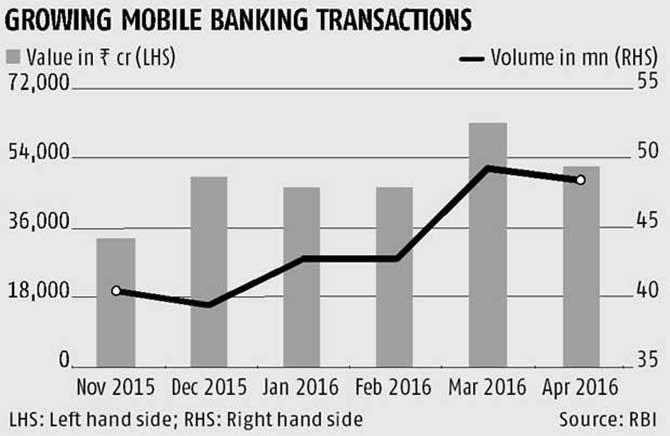 Banking on feature phones: India has over a billion mobile connections.
Banking on feature phones: India has over a billion mobile connections.
